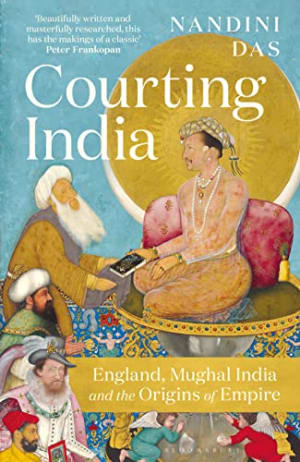The truth is rarely pure and never simple. Modern life would be very tedious if it were either, and [writing history] a complete impossibility!
Oscar Wilde, The Importance of Being Earnest, slightly edited
Oscar Wilde, who knew a thing or two about truth and deception, would have enjoyed the layers of truth and falsehoods contained in the story of David Ingram an Elizabethan sailor whose account of travels in the interior of North America have long been dismissed as fantasy.
Dean Snow in The Extraordinary Journey of David Ingram: an Elizabethan Sailor in Native North America seeks to re-evaluate the fantastical account and turn leaden fibs into golden nuggets of truth.
North America before it was North America
This is important because we know much less than we would like to about the world of North America before Europeans (and Eurasian pathogens) arrived en-mass in the mid seventeenth century:
Contact with Europeans introduced diseases so virulent that, once infected, local populations could suffer mortalities of 60 percent or more in a matter of weeks, or months at most. Vast tracts of the continent were abandoned as shattered communities became scattered bands of refugees... Whole cultures dissipated or were reinvented by bands of survivors.
Dean Snow, _The Extraordinary Journey of David Ingram
A blank slate
When Europeans did arrive in North America the sparse populations and untended land made it appear “that the unwritten American Indian histories of 10 millennia had never occurred at all.”
But when Ingram was schlepping up the East side of the continent in 1568 and 1569 he was travelling through a world that was still densely populated, with cultural and political traditions intact, so his account can give us a glimpse of a fascinating lost world - if we can trust him.
So who was this guy?
Why was David Ingram in America?
Ingram was a sailor from Barking, near London in England. He joined a small flotilla of boats led by John Hawkins (and including a young Francis Drake) who were planning a trip to East Africa, then to the Caribbean before heading back to England. The purpose of their trip was slaving - the huge profits on offer easily outweighed any moral scruples they may have had.
But in the Caribbean they accidentally bumped into the Spanish treasure fleet - outnumbered and outgunned Hawkins’ few boats didn’t stand a chance and only two ships managed to get away: Francis Drake’s ship which promptly scarpered back home, and John Hawkins’ ship which was now overloaded with fugitive English sailors from the battle with the Spanish.
Lacking supplies, Hawkins left a hundred sailors on the coast of Mexico (near the modern town of Tampico) while the other hundred still on board limped back across the Atlantic, some dying of starvation before reaching home.
David Ingram was one of those left behind.
Marooned
Very soon they came under attack from the local people. Eight sailors were killed and the others decided to take their chances with the Spanish heading south to Mexico City, or by walking north in search of rescue.
David Ingram together with two companions, Richard Browne and Richard Twide chose the walk north for the rescue option. They had hoped that salvation was not far away in Florida but in the end they had to walk more than 5,000 kilometres over the course of a year, reaching Canada before they finally encountered a French ship and passage home. This is an incredible journey to complete on foot in a continent almost completely unknown to them. Of the other 100 sailors dropped off in Mexico most were never seen again.
Truth and falsehood
The truth - universally accepted - is that Ingram and his two pals were indeed abandoned in the south of North America and were indeed rescued in the north of North America and the whole process took a year.
The disputed bit is the account of what actually happened during that year.
Intriguing
Here is where the intrigue starts: the account of his great journey was written down twelve years after it took place. Not by David Ingram who was likely illiterate, but instead by a panel of Elizabethan bigwigs who were interested in having a go at starting a colony in North America, and had asked Ingram in to get some first hand info. The bigwigs wanted to pump him for information but also had an interest in Ingram giving the ‘right’ answers - answers which would attract investors to their scheme, such as how much gold and silver there was to be found (lots please).1 Fishing for answers added one layer of unreliability to the story.
The right answers to the wrong questions
The other problem, according to Snow, is that the questioners and the questionee were often talking at cross purposes. Ingram appears to have been giving answers about the whole journey, East Africa and the Caribbean included, whereas the bigwigs thought he was only talking about North America - and this was the way it was written down. So we have Ingram talking about the use of iron tools, common in Africa at the time but anachronous when applied to America where iron ore was not yet worked.
If we assume David is only talking about America it does appear to be a jumble of rubbish. But if we untangle the answers and allocate them to the correct continent it all looks a lot more credible.
Other sources of confusion
There is a minor point that the handwriting of the scribe who was writing it all down was so atrocious it is very difficult to read any of the original transcript.2
Finally because Ingram was describing an experience from twelve years ago he could easily have misremembered certain bits - e.g. Walruses with the legs of a horse, hooves and all.
So we have a jumbled up account, which is impossible to read, has been deliberately skewed, and anyway was all based on a decade old memory.
This book therefore is Dean Snow’s version of the story when the script is deciphered, the sequence is unjumbled, the bias is laid bare, and the whole thing is cross referenced against what we do actually know of North America in the late sixteenth century.
What’s in the book?
Overall this is a pretty entertaining read, as Snow weaves the source material into a longer and deeper narrative.
Although the book is centred on Ingram and two friends’ journey across North America, it actually covers more than this, with the first third being the journey to Africa and the Caribbean (ie pre maroon) and the last quarter covering the various colonisation and exploitation initiatives launched from London towards North America and the Big Names in overseas travel at the time.
So we hear more about Francis Drake and his voyages, we get quite a lot of detail on Walter Ralegh and his ‘plantations’ in Ireland and America, and we get to know Humphrey Gilbert: Ralegh’s sadistic paedophile half brother who was set adrift in the middle of the Atlantic by his disgusted crew.
So it is only 40% of the book (if I have done my maths right) that describes the great adventure across North America.
The structure of the book felt a bit strange as I read through it, with significant chunks of it given to Elizabethan Age voyaging that is only tangentially connected to Ingram. It is churlish to complain about being given bonus material, but it did disorientate me a little.
An Elizabethan Slaver in Native North America
The final chapter of the book reflects upon the significance of Ingram’s feat, setting this against the fact that the reason he had to make the journey in the first place was because he was on a mission to enslave and sell African people.
It is up to each reader to decide whether Ingram’s legacy as a slaver is adequately balanced by his legacy as a sympathetic observer of the people he encountered in Africa and in the Americas.
Dean Snow, The Extraordinary Journey of David Ingram
Personally I do feel that this is a problematic element of the story but haven’t yet properly figured out my own views - I haven’t decided yet how much this colours my own view of David Ingram.
A convincing case?
There are still some bits of Ingram’s account that look dubious to me. For example he is reported as saying “There are to be seen many times about the Bay of St. Mary’s fire dragons, which make the air very red as they fly” is explained by Snow as “Ingram appears also to have seen St. Elmo’s Fire [lightning sparking off the mast if a ship] while off St. Mary’s Bay. He referred to the phenomenon as ‘fire dragons’.”
But overall Snow succeeds in his main aim of rehabilitating David Ingram - turning him into Mr Reliability rather than Mr Liability.
Duff notes
The book does strike a few odd notes though:
The whole aim of the story is to repair the reputation of Ingram, long maligned as a liar. But Ingram’s reputation, even if everything he said is absolutely true, would always be tarnished in the modern world. This is due to his active participation in the slave trade, as noted above. Maybe it would have made more sense to emphasise the now lost North American world he described rather than focussing on Ingram’s rehabilitation which - arguably - he is too morally compromised to deserve.
Second thing: Snow clearly has a great knowledge of and affinity for North American peoples. So it is a bit odd to hear him refer to one group (the Atacapas) as “destitute hunter-gatherers... with little to trade”. Maybe my woke-o-meter is too sensitive but this and the reputation point above gave the text a bit of an old-fashioned feel.
That said it is all fun to read - although the prose is workmanlike rather than dazzling it gets you from A to B efficiently and does justice to the more exciting moments.
Conclusion
In some ways the book is best approached a bit like Ingram’s voyage itself - you may find yourself marooned in some unexpected places, an encounter here and there may puzzle you. But when all is said and done it will take you on an epic journey to a lost world, where the truth is complex and impure.
One of the questioners was even pushing the idea that the first European to discover America was the Welsh prince Madoc - as a highly creative / ridiculous way to bolster the Tudor claim to the continent, Henry VII having some Welsh ancestry - and managed to elicit some Welsh sounding words which Ingram had apparently heard used by native Americans. I wrote about this entertainingly bonkers ‘Welsh first’ theory in my review of Norse America so was happy to discover the reason why anyone would take the trouble to promote it... ↩︎
Snow actually says (in one of his podcast appearances I think) that it was written in a deliberately hard to read script as a way of increasing job security for secretaries at the time. I’m not sure if he is serious or not! ↩︎
Book details
(back to top)- Title -
The Extraordinary Journey of David Ingram : An Elizabethan Sailor in Native North America
- Author -
Dean Snow
- Publication date -
May 2023
- Publisher -
Oxford University Press
- Pages -
337
- ISBN 13 -
9780197648001
- Podcast episode -
- Podcast episode -
Not Just the Tudors: Elizabethan ‘Travel Liar‘ The Truth about David Ingram
- Amazon UK -
- Amazon US -



